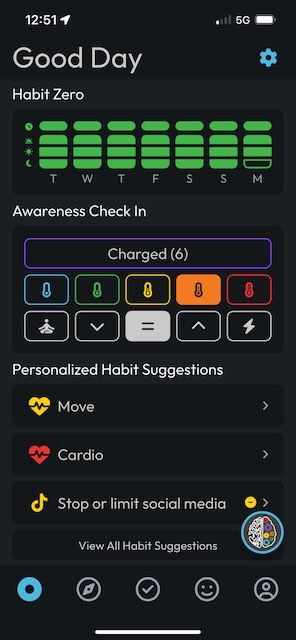
Kryptonite Habits (5 Ways To Eliminate Bad Habits)
Kryptonite refers to the famous fictional substance that nullifies Superman’s power.
A kryptonite habit is a behaviour that makes us weaker.
These are the behaviours that you find yourself repeating again and again, even though you know they’re bad for you.
Yup, you know the ones …
- Being overly addicted to technology.
- Negative self-talk and excessive worry.
- Feeding our bodies insane amounts of caffeine, sugar and other chemicals.
- Saying “Yes” to others when we really want to say “No.”
- Working in a soul-sucking job.
Kryptonite habits are the opposite of keystone habits.
Where keystone habits are your ultimate self-care habits, kryptonite habits are your ultimate self-harm habits.
Kryptonite habits fuel our anxiety and make us feel like we are Superman taking a kryptonite bath.
When we let these mindless behaviours consume our lives, it becomes impossible for us to live the best version of ourselves.
The Good + Bad News
The good news is that kryptonite habits give us the biggest bang for the buck.
For every kryptonite habit we remove from our lives, it’s like taking two steps forward.
The bad news is that because of their addictive nature, kryptonite habits are the hardest to overcome.
Let’s explore a few ways to eliminate kryptonite habits from our lives.
5 Ways To Eliminate Bad Habits
1) Make it Invisible
All habits start with a trigger.
Triggers are the external cues that prompt our behaviours.
One of the easiest ways to deal with negative habits is to remove the trigger from our environment.
Don’t bring unhealthy food into the house if you struggle with mindless eating.
Turn off the notifications on your phone if you are easily distracted and prone to procrastination.
And avoid toxic people if your energy is low and you need a break.
2) Make it Unattractive
The next part of the habit chain is prediction.
It’s not always a [this trigger] causing [this behaviour] scenario (even though it feels that way).
Our brains are much more flexible.
In reality, each potential response has a prediction score, and the habit with the highest score wins.
To overcome a negative habit, we need to identify ways to decrease the unwanted behaviour score and increase the positive habit score.
Reframing is a simple yet effective way to accomplish this.
The secret is to reframe our negative habits by reminding ourselves of the consequences of continuing and the benefits of avoiding the behaviour.
Take a moment to write down all of the negative consequences of continuing with the unwanted habit.
Don’t forget to include the benefits of avoiding the behaviour.
3) Make it Hard
The next part of a habit is the pattern of behaviour itself.
We can use something called a pattern interrupt to eliminate the negate habits from our lives.
A pattern interrupt is when we intentionally add additional steps between us and the behaviour.
If you are addicted to your technology, try keeping your phone in another room.
If you have bad spending habits, place your credit cards in a container of water and place them in the freezer.
Get creative by adding steps to make your most challenging habits a little harder to complete.
4) Make it Unsatisfying
The next part of the habit chain is the immediate result.
Every time we complete a behaviour, our brain squirts a little bit of dopamine to wire in the habit.
The trick here is to weaken our negative habits by avoiding the dopamine hit.
We can do this by noticing how bad our negative habits make us feel.
For example, we can pay attention to the stomach ache that we get from eating too much junk food.
Remember the consequences you generated in step 2?
You can use them again here to weaken negative habits even after you complete them.
5) Make it Insignificant
The last step in the habit chain is impact.
Every time we fall off the wagon, it can be easy to beat ourselves up.
This can be especially challenging with habits we really want to change.
A key point to remember is that every time we dwell on habit, we are making it stronger.
It’s important to remind ourselves that there are no perfect human beings, and neither of us will be the first.
So when you fall off the wagon, and you will, take a breath, let it go, and make a plan for what you will do differently next time.
Positive vs Negative Habits
Inside the app, negative habits work a little differently than positive ones.
With a positive habit, you set a daily target.
With a negative habit, you set a daily maximum.
In both cases, track the number of times you complete the habit.
A positive habit is considered complete when you meet or exceed your target.
A negative habit assumes completion until you exceed your maximum limit.
Negative habits can be identified by the minus icon appearing next to the habit.





